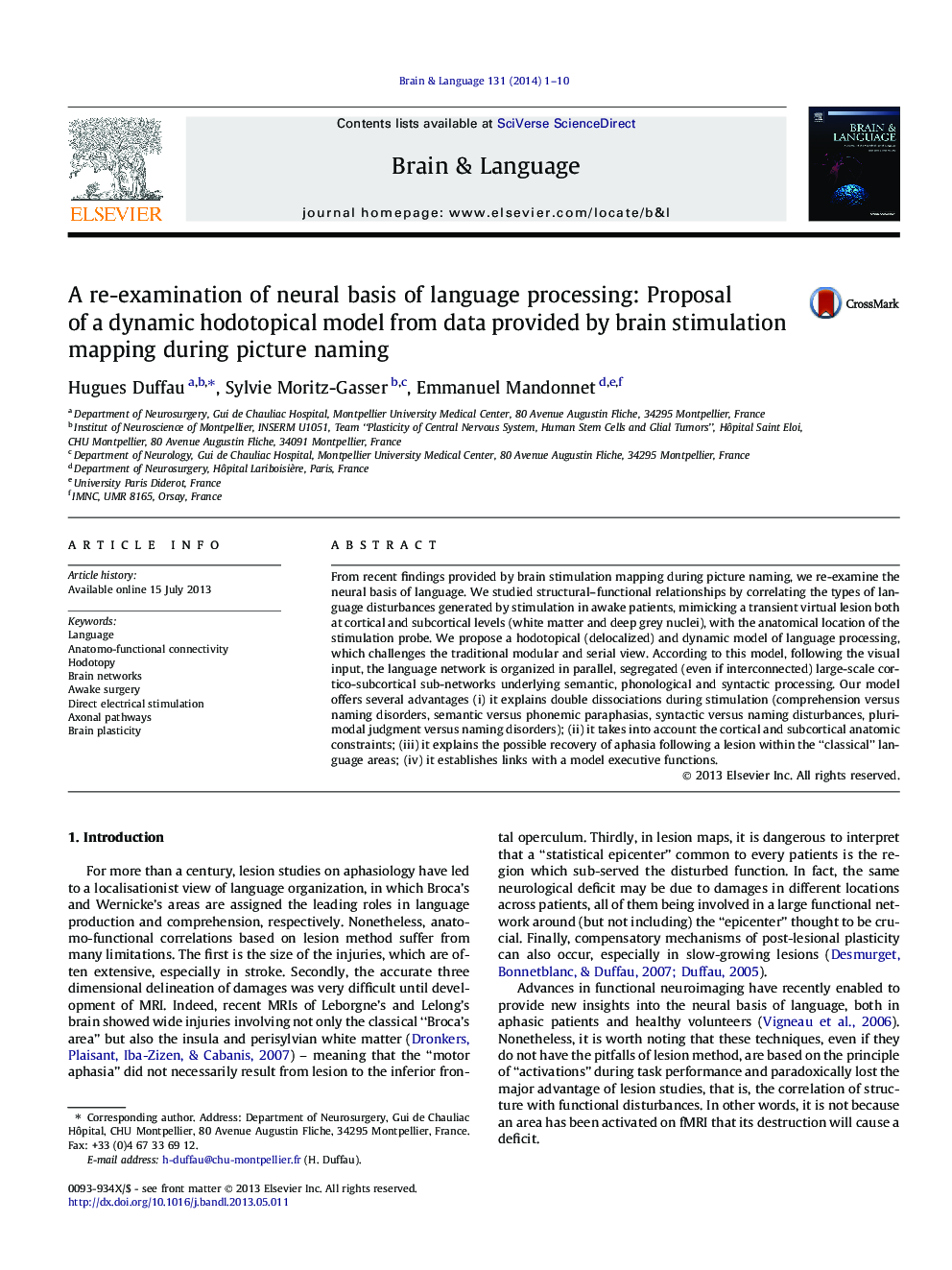| Article ID | Journal | Published Year | Pages | File Type |
|---|---|---|---|---|
| 925289 | Brain and Language | 2014 | 10 Pages |
•Data issued from brain stimulation enables to re-examine the neural basis of language.•A hodotopical model of language processing challenges the modular view.•This model is based on parallel distributed cortico-subcortical subnetworks.•Phonological, semantic and syntactic processing are served by distinct sub-circuits.•Anatomic constraints are incorporated into this dynamic model.
From recent findings provided by brain stimulation mapping during picture naming, we re-examine the neural basis of language. We studied structural–functional relationships by correlating the types of language disturbances generated by stimulation in awake patients, mimicking a transient virtual lesion both at cortical and subcortical levels (white matter and deep grey nuclei), with the anatomical location of the stimulation probe. We propose a hodotopical (delocalized) and dynamic model of language processing, which challenges the traditional modular and serial view. According to this model, following the visual input, the language network is organized in parallel, segregated (even if interconnected) large-scale cortico-subcortical sub-networks underlying semantic, phonological and syntactic processing. Our model offers several advantages (i) it explains double dissociations during stimulation (comprehension versus naming disorders, semantic versus phonemic paraphasias, syntactic versus naming disturbances, plurimodal judgment versus naming disorders); (ii) it takes into account the cortical and subcortical anatomic constraints; (iii) it explains the possible recovery of aphasia following a lesion within the “classical” language areas; (iv) it establishes links with a model executive functions.
